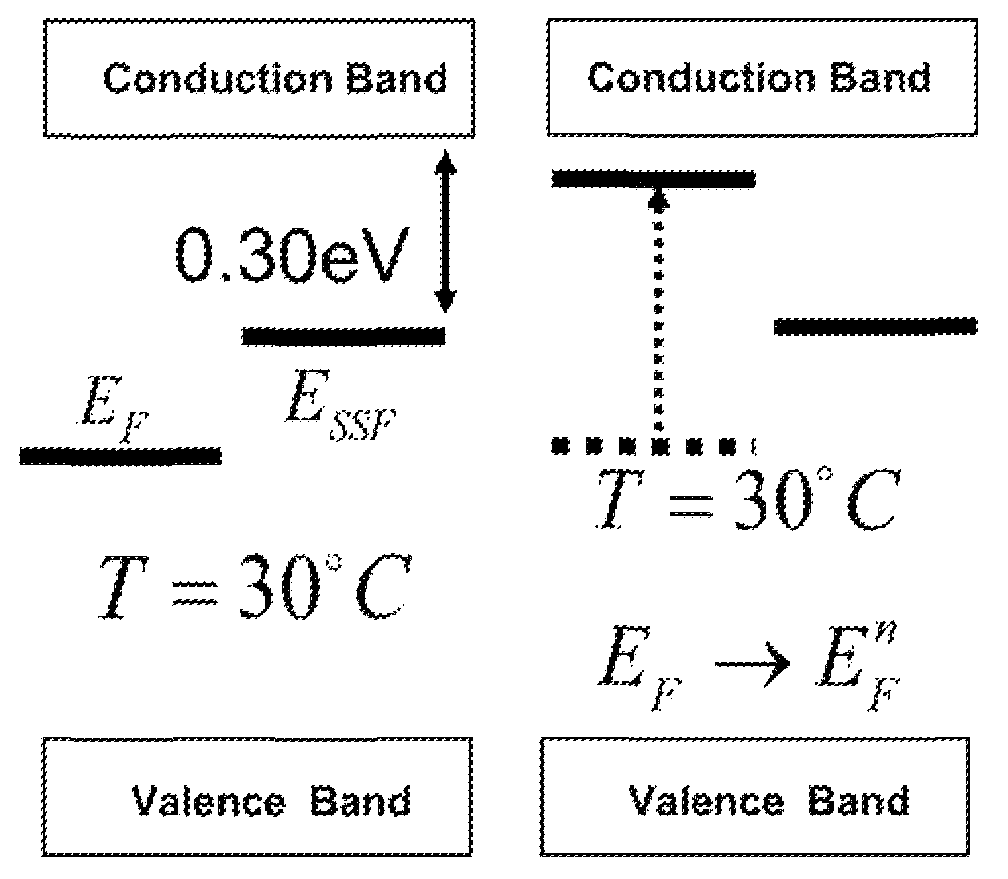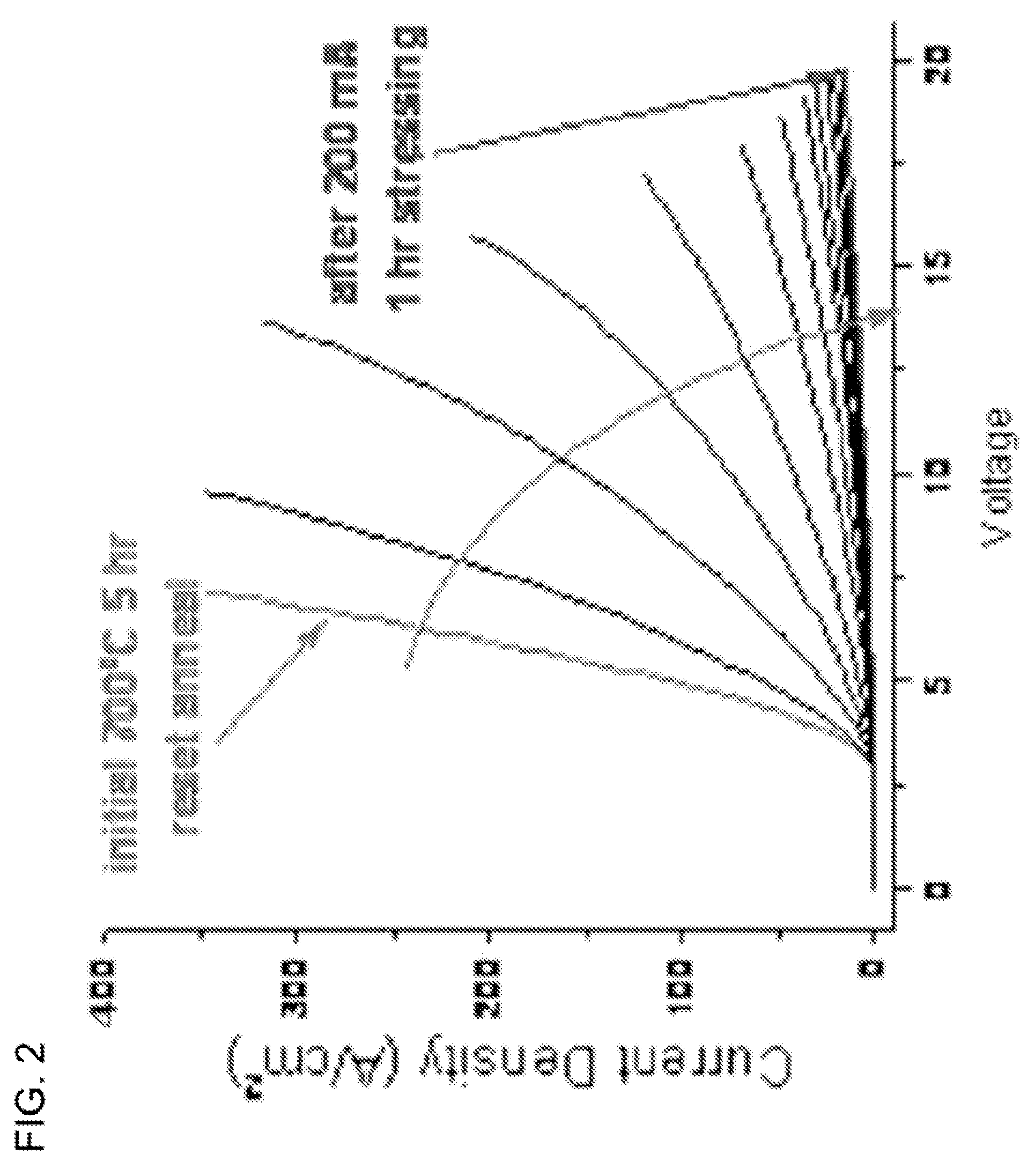Method of mediating forward voltage drift in a SiC device
a forward voltage drift and sic device technology, applied in the field of forward voltage drift mediating in a sic device, can solve the problems of insufficient recovery rate and inducible recovery, and achieve the effects of reducing the impact of ssfs, minimizing the expansion of ssfs and corresponding vf drift degradation rate and magnitude, and extending the operational life of the devi
- Summary
- Abstract
- Description
- Claims
- Application Information
AI Technical Summary
Benefits of technology
Problems solved by technology
Method used
Image
Examples
Embodiment Construction
An embodiment of the invention, for example, includes a method of reversing Shockley stacking fault expansion, which in turn leads to a recovery of degradation to the electrical properties of the device (Vf drift, increases in drift layer resistance, reduction in majority carrier conduction current and / or increases in leakage current in reverse blocking mode). The method comprises providing a bipolar or a unipolar SiC device exhibiting a degradation in the electrical properties caused by forward bias bipolar injection that leads to Shockley stacking fault expansion. The SiC device is heated to a temperature above 150° C. and below the maximum operational temperature of the SiC device and packaging. Operation of SiC for recovery procedures is, for example, performed up to temperatures of approximately 700° C., provided that the electrical packaging of the device and contact integrity are not compromised. A forward bias current is passed through the SiC device sufficient to induce at ...
PUM
 Login to View More
Login to View More Abstract
Description
Claims
Application Information
 Login to View More
Login to View More - R&D
- Intellectual Property
- Life Sciences
- Materials
- Tech Scout
- Unparalleled Data Quality
- Higher Quality Content
- 60% Fewer Hallucinations
Browse by: Latest US Patents, China's latest patents, Technical Efficacy Thesaurus, Application Domain, Technology Topic, Popular Technical Reports.
© 2025 PatSnap. All rights reserved.Legal|Privacy policy|Modern Slavery Act Transparency Statement|Sitemap|About US| Contact US: help@patsnap.com



